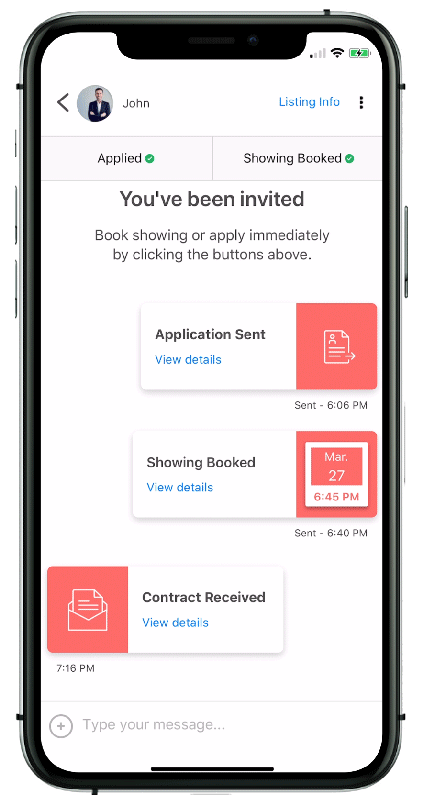Thorough inspections of your rental property at the beginning and end of a tenancy are key to assessing the unit’s condition and ensuring you and your renters are on the same page. Taking the time to check and make note of each item’s condition not only helps avoid disputes over potential damages, but gives you a clear record of what might need repairs or maintenance so you can prepare accordingly. This is easier said than done though, as every property has plenty of different areas and lots of nooks & crannies many landlords may miss during their walkthrough inspections. To help you make sure you’re checking every box during your next inspection, liv.rent has put together this guide on how and when you should assess your property’s condition, including a full downloadable rental inspection checklist with every item you’ll need to take a look at.
Download your free rental inspection checklist
Thorough inspection of your rental property is needed to avoid disputes over potential damages. Use this free walkthrough checklist during move-in and move-out to assess your unit’s condition.
When to do a rental walk-through inspection
At a minimum, most landlords will perform a walkthrough inspection of their rental property prior to the tenant moving in, and at the end of the tenancy as they’re moving out. The purpose of these inspections is essentially to gauge the condition of the property and various items within at the beginning and end of a tenancy, in order to determine whether or not repairs or cleaning are needed.
In provinces like Alberta and B.C., these inspections are required by law, and come with additional stipulations governing how and when landlords are to perform these walk-throughs. In other provinces such as Quebec, rules are less clear – but we’d recommend performing both a move-in and move-out inspection, as a minimum.
Additionally, some landlords may wish to schedule periodic checks throughout the course of the tenancy to ensure that everything is well maintained. In most provinces, landlords are permitted to enter the unit once per month for the purpose of inspecting the unit, with proper notice given to the tenant prior to entry. Generally, landlords must provide 24-hours notice before any inspection.
>> Recommended Reading: The Complete List of Landlord and Tenant Responsibilities
How to do a walk-through inspection using a rental inspection checklist
Landlords performing a walk-through inspection of their rental unit must follow a set of protocols that differs slightly from province to province. Generally, landlords will use a rental inspection checklist that contains space for an assessment of the condition of each item at move-in and move-out. This form must also contain key information like the property’s address, the landlord’s contact information, names and signatures from both parties, and the date the inspection was performed, among other things.
The inspection process is performed differently at move-in and move-out, so let’s quickly break down what each process will look like for Canadian landlords.
How to do a move-in inspection
Move-in inspections should always be performed prior to the new tenant moving in, and after the previous tenant has vacated the property. The unit itself should be empty and free of all furniture, and in an appropriate state of cleanliness so that individual items on the condition report are clearly visible and in good repair.
Here’s a step-by-step breakdown of how the inspection process is performed:
- Schedule the inspection – Landlords are responsible for arranging the inspection and notifying the tenant accordingly. The initial move-in inspection is typically conducted at the time of moving in, at a time that works for both parties. If a mutually agreeable time can’t be reached, landlords must give a written offer suggesting a date and time. If this still fails, the landlord may perform the inspection on their own and provide their tenant with a copy of the completed and signed inspection report. If this is the case, the tenant may not be able to dispute damages at the end of the tenancy since they weren’t present to inspect the property themselves. Tenants may send a representative to complete the move-in inspection if they’re unable to make the appointment.
- Download a rental inspection checklist – In most provinces, landlords must download a report listing out all of the rooms and items that must be inspected during the walk-through. While standard condition inspection reports are generally available through each province’s tenancy branch, landlords may also use their own forms so long as they contain the requisite information.
- Conduct the inspection – Accompanied by the tenant or their representative, landlords must walk through the unit and note the condition of each item. It’s good practice to record a general condition such as “good” or “poor”, in addition to specific damages such as rips in the carpet or scratches on a window. Taking photos of any areas of concern is also a great idea so that you have evidence in case of any disputes later on.
- Sign the completed rental inspection checklist – Once the walk-through inspection is complete, both parties must sign and date the completed form. Tenants must look over the landlords’ report and notes, and make clear any disagreements or thoughts they have on individual items before signing.
- Provide tenants with the finalized report – Within a set timeframe (typically one week), landlords must give their tenants a copy of the completed rental inspection checklist with both parties’ signatures.
How to perform a move-out inspection
Similar to move-in inspections, move-out inspections come with a set of rules and procedures for how landlords are to schedule and facilitate the walk-through.
Here’s a quick breakdown of the move-out inspection process using a rental inspection checklist:
- Schedule the inspection – The same rules apply to move-out inspections compared to move-in inspections. Landlords are responsible for scheduling a date & time that works for both parties, verbally or in written form. Landlords may still perform the inspection alone if the tenant or their representative are unable to attend after repeated attempts to schedule an inspection.
- Bring the rental inspection checklist – Landlords must use the same condition inspection report or rental inspection checklist from the move-in inspection in order to compare the condition at the beginning and end of the tenancy.
- Conduct the inspection – Just like at the beginning of the tenancy, landlords must walk through the unit with the tenant and note any changes in the condition of each item. Note the general condition and any specific damages and if you took photos during the move-in inspection, reference those to justify your classification of each area.,
- Sign the completed rental inspection checklist – Once the walk-through inspection is complete, both parties must sign and date the completed form. Tenants must look over the landlords’ report and notes, and make clear any disagreements or thoughts they have on individual items before signing.
- Provide tenants with the finalized report – Within a set timeframe (typically one week to fifteen days), landlords must give their tenants a copy of the completed rental inspection checklist with both parties’ signatures.
Download your free rental inspection checklist
Thorough inspection of your rental property is needed to avoid disputes over potential damages. Use this free walkthrough checklist during move-in and move-out to assess your unit’s condition.
Rental inspection rules by province
Specific rules for rental inspections are governed by individual provinces in Canada, and thus can vary based on where you’re renting. To help clear up any confusion on this subject, let’s look at each province: British Columbia, Ontario, and Alberta, to see how key items compare.
British Columbia
- Required notice to enter unit: 24 hours written notice, landlord may enter once per month to inspect
- Mandatory or not: Inspections are mandatory at the start and end of the tenancy
- Rental inspection checklist: Must use a printed copy of either the standard Condition Inspection Report, or a form that contains: full names of the landlord, the tenant and the tenant’s representative (if applicable), the unit’s address, the date the tenancy begins, the landlord’s address, and the date of the walk-through inspection.
- Moving in: Inspection must take place once the unit is empty, after the previous tenant has moved out. Inspections typically take place the day of move-in, but don’t need to so long as the date and time work for both parties.
- Moving out: Tenants must move out by 1:00 pm on the final day of the lease agreement. Tenants must clean the unit and remove all furnishings to prepare for the inspection.
- Providing copies of the rental inspection checklist: Landlords must provide a copy of the move-in inspection checklist within 7 days of the inspection, and a copy of the completed move-out inspection report within 15 days.
Ontario
- Required notice to enter unit: 24 hours written notice, landlord should make a reasonable effort to limit the number of entries for inspections.
- Mandatory or not: Inspections are not mandatory in Ontario, but are highly recommended.
- Rental inspection checklist: It’s recommended that landlords use a standardized condition inspection report to perform inspections, but not mandatory by law.
- Moving in: Inspections must take place once the unit is empty, after the previous tenant has moved out. Inspections typically take place the day of move-in, but don’t need to so long as the date and time works for both parties.
- Moving out: Tenants must move out by midnight on the final day of the lease agreement. Tenants must clean the unit and remove all furnishings.
- Providing copies of the rental inspection checklist: Landlords should provide tenants with signed copies of the completed move-in/move-out inspections.
Alberta
- Required notice to enter unit: 24 hours written notice, no specific guidelines on how often landlords may enter.
- Mandatory or not: Inspections are mandatory in Alberta at both the beginning and end of a tenancy.
- Rental inspection checklist: There are no provincially regulated forms in Alberta. Landlords should still use a standardized checklist with all the requisite information
- Moving in: In Alberta, inspections must take place within a week prior to or after moving in. Inspections should take place once the unit is empty, after the previous tenant has moved out. Inspections typically take place the day of move-in, but don’t need to so long as the date and time works for both parties.
- Moving out: Tenants must move out by noon on the final day of the lease agreement. Tenants must clean the unit and remove all furnishings. Inspections must take place within a week of moving out of the unit.
- Providing copies of the rental inspection checklist: Landlords should provide tenants with signed copies of the completed move-in/move-out inspections.
>> Recommended Reading: FAQ: Landlord & tenant responsibilities in Alberta
Downloadable rental inspection checklist
A rental inspection checklist is a document intended to guide landlords through the walk-through process, ensuring they aren’t missing any important items throughout the unit. This document should be broken down into individual rooms/areas of the unit, such as entryways, bedrooms, bathrooms, storage areas, basements, and so on.
Within each room, there should be a comprehensive list of standard items such as flooring, windows, ceilings and switches/plugs, as well as space to write in features unique to the unit such as countertops or heating units.
If your province has a standardized rental inspection checklist, it’s a good idea to utilize that – however, in many cases, this resource is not provided.
If you’re looking for a comprehensive condition report that can be used for walk-through inspections in Canada, liv.rent has created a downloadable Rental Inspection Checklist complete with every item you’ll need to look over, plus options to add additional rooms and items. You can download your copy here.
Download your free rental inspection checklist
Thorough inspection of your rental property is needed to avoid disputes over potential damages. Use this free walkthrough checklist during move-in and move-out to assess your unit’s condition.
FAQ: Move-in & move-out inspections
What happens during a landlord inspection?
During an inspection, whether it occurs at move-in, move-out, or during the tenancy, landlords and tenants will walk through the unit together to look at the condition of individual items. Generally, this is reported in an inspection checklist for reference.
The above sections should give you a better idea of the exact proceedings during these types of inspections.
What do landlords look for at an inspection?
Landlords will typically examine the general condition of items to evaluate whether damage has been caused to the unit, as well as record specific notes and cases of damage or wear to the unit.
How long does a landlord inspection take?
A walk-through inspection can take as little or as long as is required to get a detailed look at the property’s condition. The exact time depends on the size of the unit and what type of inspection is being performed, however landlords should try to limit time spent in the unit so as not to interfere with the tenant’s enjoyment of the space.
Can landlords do random inspections?
In nearly every Canadian province, landlords must provide a minimum of 24 hours written notice before entering the unit for an inspection.
How often can a landlord do an inspection in BC?
Landlords in B.C. may enter the unit once per month for the purpose of an inspection.
What can a landlord do during an inspection in Ontario?
During an inspection, landlords can only perform actions that were specified in the written notice they gave to the tenants. This usually means determining the condition of items, whether or not repairs are necessary, and taking pictures/notes.
What does a landlord need to do before a tenant moves in?
Prior to the new tenant moving in, landlords should ensure that they have conducted a move-out inspection with the previous tenant, documenting any damage and arranging repairs or cleaning as necessary. The unit should be empty and in a good state of repair and cleanliness prior to the new tenant’s arrival.
While the unit is still empty, the landlord must also perform a move-in inspection with the new tenant.
Is a move inspection required in Ontario?
By law, move-in and move-out inspections are not required in Ontario. Landlords should still perform inspections regularly to keep a record of the condition of their unit and avoid disputes later on.
Can a landlord charge for cleaning after you move out?
If a tenant leaves the unit without cleaning it adequately, the landlord may retain part or all of the security deposit to cover the cost of cleaning. Exact guidelines for this vary by province.
Can landlords take photos during an inspection in Ontario?
Landlords may only take photos of the unit so long as they have provided the proper written notice to the tenant if the tenant’s personal possessions are present in the unit.

Rethink The Way You Rent
Not on liv.rent yet? Experience the ease of digital applications & contracts, verified tenants & landlords, virtual tours and more – all on one platform. Sign up for free or download the app.
Subscribe to receive the latest tenant & landlord tips and get notified about changes in the Canadian rental market.
>> Stay up-to-date on the average rent in Vancouver, Toronto and Montreal: Rent Reports.




![Integrations Guide for liv.rent Landlords & Property Managers [2026]](https://liv.rent/blog/wp-content/uploads/2025/12/2025.12_Liv.rent-Integrations-blog-header-1080x675.png)
0 Comments